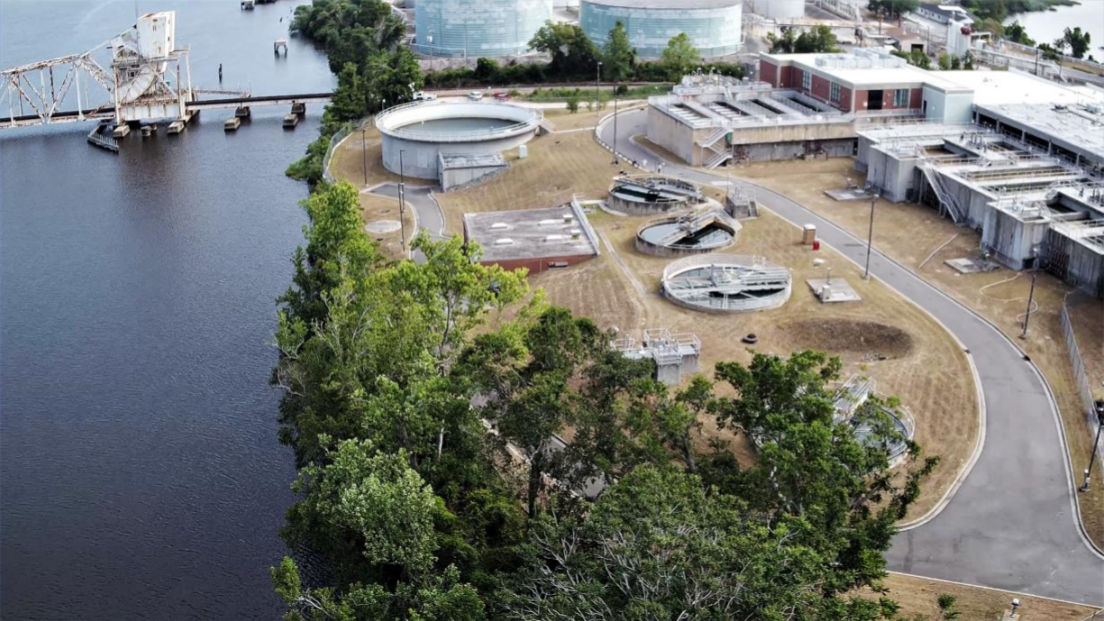
The amount of “forever chemicals” making their way into the drinking water source of thousands of Wilmington-area residents remains steady despite the fact that Chemours has stopped directly discharging its wastewater into the Cape Fear River.
When converted into pounds per day, per- and polyfluoroalkyl substances, or PFAS, including GenX, are as prevalent in the water coming from the lower Cape Fear River since the state and Chemours Co.’s Fayetteville Works entered into a consent order more than a year and a half ago, said Carel Vandermeyden, deputy executive director of Cape Fear Public Utility Authority’s treatment/engineering services.
Supporter Spotlight
“It’s not going down,” he said. “It’s staying the same.”
Authority officials and researchers say the primary source of PFAS entering the river comes from contaminated groundwater at the Fayetteville plant, sediment between the intake and the facility, and air emissions.
Vandermeyden was among several presenters to speak in a webinar hosted last week by the North Carolina Coastal Federation. The session, which lasted 2.5 hours, provided updates on ongoing studies of the presence of the chemicals in drinking water sources throughout the state and the effects of these chemicals on humans.
Jason Surratt, program director for the collaboration of researchers from universities across the state known as the PFAS Testing Network, or PFAST, said the network’s final report is scheduled to be submitted to the state in April 2021.
PFAST is analyzing water samples from each drinking water source in the state, determining the risks of PFAS to private water wells, studying which filtration methods best remove PFAS from drinking water, determining how PFAS travels through air emissions, and gaining a better understanding of how these chemicals impact human health and the environment.
Supporter Spotlight
The network has been providing quarterly reports of its findings to the North Carolina Department of Environmental Quality, or DEQ, since Oct. 1, 2018.
Under the terms of the February 2019 consent order between DEQ and Chemours, the company must greatly reduce the amount of PFAS it discharges into the river and atmosphere.
In March, the facility announced its newly installed thermal oxidizer, one of the requirements of the consent order, was removing 99.99% of PFAS from its air emissions. A thermal oxidizer heats volatile organic compounds to the point those compounds are broken down and destroyed before entering the atmosphere.
But the Cape Fear region’s drinking water sources continue to contain the highest concentrations of PFAS, which are a group of man-made chemicals used in consumer products, in the state.
Significant levels of PFAS compounds are within a series of four groundwater streams that flow directly into the Cape Fear River from underneath the Chemours site, Sheila Holman, DEQ’s assistant secretary for the environment said Thursday during her webinar presentation.
“Right now, we’re capturing the water and it’s being treated through an external activated carbon unit,” she said.
The facility will have to install an underground barrier wall nearly 1.5 miles long to stop the groundwater from seeping into the river.
PFAST researchers who earlier this year studied the effects of PFAS in the immune systems of mice found high concentrations of Nafion byproduct 2 in the rodent’s blood streams. The introduction of PFAS ultimately led to liver weight gain in the mice, said Jamie DeWitt, an associate professor at East Carolina University.
Detlef Knappe, a professor at North Carolina State University, said drinking water sources downstream of the Chemours Fayetteville facility are the most heavily impacted in the state, with some exceptions.
Knappe is part of a team of researchers from N.C. State and Duke University tasked with collecting and examining samples from about 400 drinking water supplies throughout the state.
Researchers found that the drinking water source in Maysville, a small, Jones County town of about 1,000 residents, contained PFAS and perfluorooctanoic acid, or PFOA, contamination above the Environmental Protection Agency’s lifetime health advisory levels.
The source of the contamination, researchers say, is likely aqueous film-forming foam, which was used in firefighting applications up until around the year 2000.
In June 2019, the town switched to an alternative water source, tapping into Jones County’s regional water system, Knappe said.
Researchers also found high levels of PFAS in the Haw River in Pittsboro in Chatham County from samples collected in September 2019.
Samples first collected in April 2019 from that area of the river, which was flowing at a high rate when the samples were taken, registered low PFAS levels, Knappe said.
When the river flow rate was substantially lower that following September, the PFAS concentration was much higher – more than 800 nanograms, he said.
“This, of course, is very concerning,” he said.
Heather Stapleton, an environmental science professor at Duke University’s Nicholas School of the Environment, said tap water samples collected from the homes of participants in various areas of central North Carolina, including Cary, Durham, Chapel Hill, Pittsboro and Raleigh, as well as about a dozen in Wilmington, said the highest levels of PFAS were found in the tap water in Pittsboro.
Stapleton has been part of a research team studying the effectiveness of water filtration systems in removing PFAS.
Their study, published in February, found that the level of removal efficiency widely varied and that about half of the PFAS, on average, were removed.
“We do like to make the point that any filter is better than no filter,” Stapleton said.
She also encourages residents frequently change their filters.
Cape Fear Public Utility Authority, or CFPUA, is in the process of constructing eight granular activated carbon filters at its Sweeney Water Treatment Plant.
The nearly $43 million project could reduce PFAS levels by 90% at the plant, which provides about 80% of the drinking water to CFPUA customers, according to the authority’s website.
About 160,000 residents in the Cape Fear region get their drinking water from the public utility.







